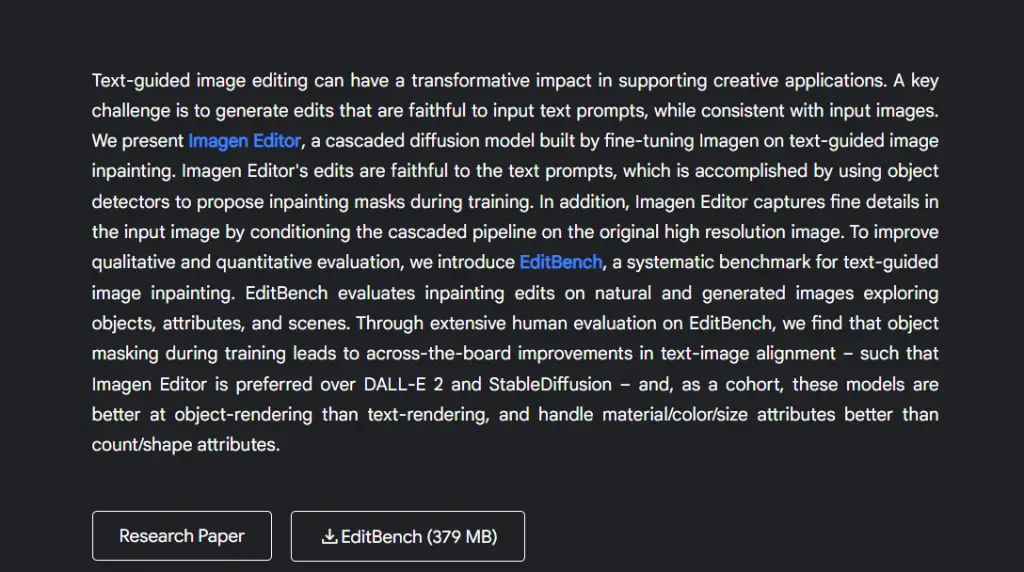Imagen: Unprecedented Text-to-image Diffusion Model

What is Imagen?
Developed by Google Research, Brain Team, 2022, Imagen AI is a text-to-image diffusion model with unprecedented realism and deep language understanding. Google Imagen AI builds on the ability of large Transformer language models to understand text, with the benefits of diffusion models for high-fidelity image generation. In a nutshell, Imagen is an artificial intelligence system that creates realistic images from input text.
Price: Free
Tag: Text-to-image
Developer: Google
Share Imagen
Imagen Features
- Efficient large pre-trained frozen text encoders for text-to-image tasks.
- Key Scaling Pretrained Text Encoders
- New Threshold Diffusion Sampler, which can use very large classifier-free guidance weights.
- The new Efficient U-Net architecture, which has higher computational efficiency, higher memory efficiency and faster convergence speed.
Imagen AI Price
Free
Imagen AI Free Download
No version available for now, but we can use Imagen Editor & EditBench powered by Google instead. Imagen Editor is a fine-tuned version of Imagen AI’s text-guided image composition capabilities.
How to Use Imagen AI Google and Imagen AI Editing?
- No need to log in. Click Imagen Editor & EditBench and enter.
- You can find a brief introduction for Imagen Editor & EditBench.
- Click Research Paper to view related papers, and click EditBench to download and use the software.


Imagen AI Paper
Imagen AI Review
- Google Research, Brain Team: Imagen risks encoding harmful stereotypes and representations, leading us to decide not to release Imagen for public use without further safeguards.
- Jeremy Gray: Google’s Imagen AI can generate realistic images from natural text with amazing realism.
- Chitwan Saharia: Imagen AI is currently the most advanced text-to-image tool, ranking first in both COCO FID and DrawBench tests.
FAQ
Google will not release Imagen for public use at this time.
Preliminary analysis suggests that Imagen encodes a range of social and cultural biases when generating images of activities, events, and objects. The development team’s next steps will attempt to address this challenge.
